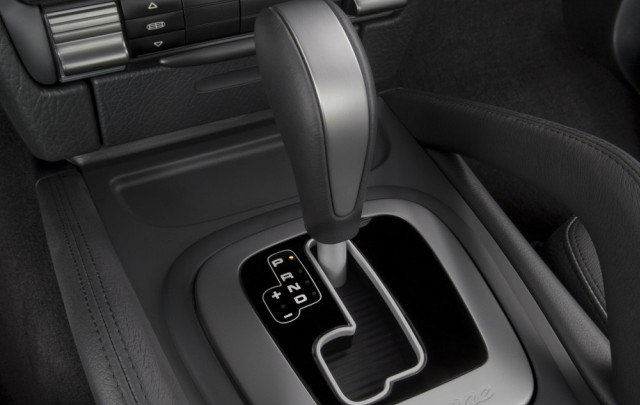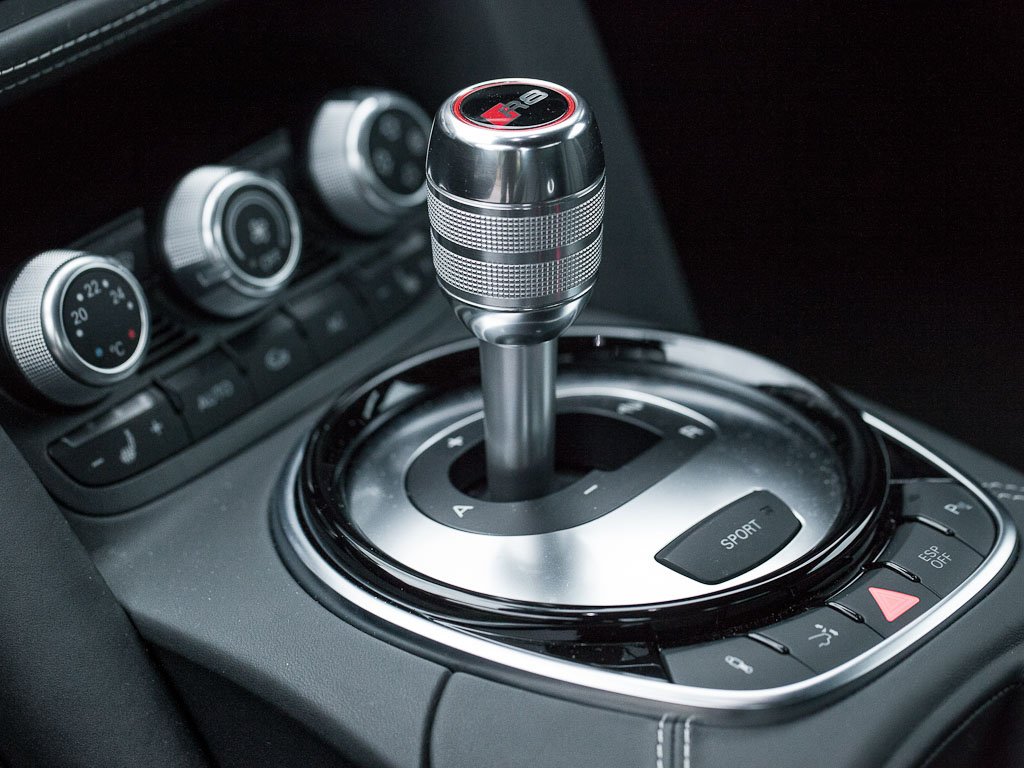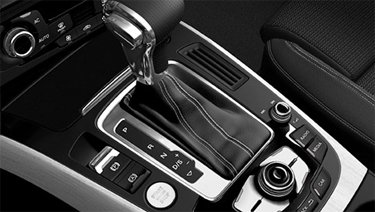What is Tiptronic. How it works. Pros and Cons of Tiptronic Transmission
Tiptronic is a trade name of the manual gear shifting function (mode), which is implemented in the automatic transmissions. In the world of the automobile industry the name Tiptronic is used to define automatic transmissions of a specific design and control method regardless of the actual developer and producer of the transmission.
Pros and Cons of Tiptronic
Tiptronic mode has the following advantages:
- When driving on the asphalt road it is convenient to use a standard automatic transmission – just start the engine and drive. But when driving uphill or the road surface is slippery – a manual transmission is a better solution. Therefore, Tiptronic is a unique solution for any driving conditions.
- If you need to overtake a car, then the automatic transmission with the Tiptronic function will easily cope with this task. Previously, the manual transmission was a better solution for such purposes, because with standard automatic transmissions it was impossible to move instantly into the top gear. The transmission with the Tiptronic function has a special kick-down option, which ensures sharp increase of the engine RPM.
- With the help of the Tiptronic function it is possible to perform the engine braking, which is not allowed in conventional automatic transmissions.
- In winter, Tiptronic eliminates wheel slippage as the driver starts moving from the 2-nd gear. With Tiptronic driving on the iced road is not a problem.
- Off-road driving with the Tiptronic transmission will be an easy task, because after switching to the manual mode it is much easier for the driver to maneuver and drive round any road obstructions.
- Unlike manual transmissions, Tiptronic protects the engine from inaccurate gear shifting. If the driver hastily shifts gears, the engine and transmission won’t be affected.
- With regard to fuel consumption, the Tiptronic transmission is more fuel efficient than standard automatic transmissions, but at the same time Tiptronic is outperformed by the manual transmission at this parameter.
- If the driver does not resort to using the manual mode, then the “smart” software will switch the transmission to the automatic mode, i.e. after stopping at the traffic light the engine should not be started manually, the transmission control module will start it automatically.
History of Tiptronic transmission
Initially, the name Tiptronic was introduced by the company Fiat (scudo TD) for the 4-speed automatic transmission (4HP22HL) with the electronic control unit developed by the German manufacturer of automatic transmissions ZF Friedrichshafen AG. This gearbox was designed according to technical requirements of Porsche and was intended for mass production of the new generation (3-rd) of cars Porsche 911 – Porsche 964, which started in 1990. In this automatic transmission ZF engineers for the first time implemented in practice a certain set of engineering solutions, which, on the one hand, made drivers feel like driving a car with the sequential manual gearbox widely used in the motorsports industry, and on the other hand, did not require experience and special skills for driving cars equipped with sequential manual transmissions.
The Tiptronic solution was recognized as successful in every respect not only by car manufacturers but also by the customers. Porsche patented the Tiptronic technology in 1990. For a long time manufacturers didn’t care much for developing any analogs of Tiptronic, except for the American Chrysler with its AutoStick (will be reviewed below). But since the beginning of the 2000s, the Tiptronic concept, as the automatic transmission with the option of manual gear shifting, has become widely used in the global automotive industry. The issue of reliability in case of long-time operation was settled and the technical solutions, taken as a basis of the Tiptronic concept, were successfully integrated in automatic transmissions by the overwhelming majority of auto manufacturers. Some design solutions were very similar to Tiptronic, other solutions had only the same principle of operation. That’s how Autostick operates
In fact, the term “Tiptronic” has become a common name for any automatic transmission capable of simulating the sequential manual control. However, it should be taken into account that not all automatic transmissions with the option of manual gear shifting apply the Porsche solution and consequently not all of them fall within the scope of the Tiptronic trademark.
Learn more about the Tiptronic technology in the following videos:
In addition to having the option of manual gear
selection, the Tiptronic mode is a hydromechanical and shaftless technology
operating on planetary reduction gears, with electronic control and the torque
converter lock-up on all gears. In the Tiptronic mode manual gear shifting must
be performed in one lever stroke or in due order (in other words drivers cannot
omit any gears, for example, it is not allowed to shift from the 2-nd to the
4-th gear) as in sequential transmissions: to upshift the driver has to push
the lever forward and in order to downshift it is required to pull the lever
backward. This algorithm of gear shifting is opposite to the standard sequence
of gear shifting operations applied in motorsports: pull the lever backward to
upshift and push the lever forward to downshift.
Modern DSG transmissions of any design and CVTs
do not fit the Tiptronic trade name, even if their operation algorithms of
manual gear shifting are the same as Tiptronic. According to the trademark law,
any automatic transmission equipped with electronic control, torque converter
lock-up on all gears and specific algorithm of manual gear shifting should be
called Tiptronic. This name is given to 4-6 speed automatic transmissions used
in various models of cars of VAG and PSA concerns, despite the fact that the
development of these automatic transmissions has nothing to do with Porsche.
Chrysler
In 1989 Chrysler designed the automatic transmission А604 Ultradrive, which, in terms of design, was very similar to the first Tiptronic modification. A604 had an electronic control unit, torque converter lock-up on the 3—4 gears, and this transmission didn't have overrunning clutches, as in the Tiptronic technology developed by ZF. The torque converter lock-up was not implemented for 1-2 gears, because it potentially could reduce the transmission resource, which could have a negative impact on the transmission reliability during the first warranty years of operation taking into account that the average annual mileage for American cars amounted to 60 000 miles. А604 Ultradrive had a standard gear selector and was not equipped with the option of forced gears selection, as in Tiptronic. But A604 became the first automatic transmission with adaptive control algorithms that in some way compensated the lack of manual gear selection.
If Tiptronic technology was designed to combine
the convenience of automatic transmissions and sports driving style, then the
Ultradrive transmission was developed for enhanced fuel economy. As a result, two
closely related engineering solutions were independently implemented to acheve
different goals. It stands to mention that Chrysler engineers could have implemented
the function of manual gear shifting in A604, but back then the aggressive driving
style was not the main priority for American transmission manufacturers. Subsequently,
Chrysler added the option of manual gear shifting (named as Autostick) for some
models (LH, JA(JR) platforms) equipped with
А604 Ultradrive.
That’s how Autostick operates
Ferrari F1
In 1989, Ferrari, for the first time in Formula One, used the semiautomatic gearbox with paddle shifters for its racing car Ferrari F-640. Despite the fact that this technology had nothing in common with the Tiptronic design, this gearbox became the first transmission solution in the motorsports, allowing racers to use only two pedals (gas and brake) while driving (with the exception of starting from standstill). The car with this transmission won the first race in which it started. The Ferrari driver, Nigel Mansell, who initially was wary of such transmission solution, recognized the contribution of this gearbox to the ease of steering and to the successful result.
Nigel Mansell driving Ferrari F-640 in 1989
Different manual gear
shifting options in automatic transmissions
Nowadays, the option of manual gear shifting
(under different labels) in automatic transmissions is implemented by many
automatic transmission manufacturers, so let’s review the most popular
solutions:

- Tiptronic is implemented in automatic transmissions installed in cars of Volkswagen Group (VW, Audi, Skoda, Seat, Porshe);

- S-tronic is implemented in DSG transmissions (for example, DQ250 (02E) DQ500, DL501 (0B5) ), which are mainly installed in Audi and VW car models;

- Multitronic is implemented in CVT transmission 01J, which is installed in Audi car models (A4, A6, A8);

- Steptronic is implemented in automatic transmissions, which are installed in BMW car models;

- Easytronic option (developed by Opel and Luk) is implemented in DSG transmission, which is installed in Opel car models (Corsa, Vectra, Astra, Zafira, Meriva). Easytronic is the Opel trade name for a type of transaxle-based semi-automatic transmission or gearbox, as used in some Opel/Vauxhall cars. Easytronic is not a Tiptronic gearbox design; it does not have a torque converter. It is fundamentally a conventional manual transmission, with a single-plate dry clutch. The transmission is controlled by an electronic control unit (ECU).

- Tiptronic S is a modernized Tiptronic technology, which has the capacity to adjust to the driver’s driving style and allows driver to shift gears without switching to the manual mode. This solution was introduced in 2000 for the Porsche Boxster. In the Porsche Cayenne, the Tiptronic S was upgraded to six-speed.
In theory, the possibility of equipping any standard automatic transmission with the option of manual gear shifting does not depend on its specific design. This function can be added even in gearboxes without electronic control under the condition of implementation of required modifications. For a long time implementation of the Tiptronic function in automatic transmissions was impossible, because a rigid connection between the wheels of the car and the engine crankshaft in many old automatic transmissions was not implemented.
Principle of Tiptronic
operation
Automatic transmissions with the Tiptronic
function can operate in two modes: full automatic mode and manual control mode
(Tiptronic). When the Tiptronic function is not selected, the transmission
operates like a standard automatic transmission with ECM (Electronic Control
Module) responsible for shifting gears. For the Tiptronic mode engineers
offered the operation scheme in which the driver at any moment can decide what
gear should be engaged like it is done in manual transmissions. Switching to
the manual mode and further control in automatic transmissions with a Tiptronic
function is implemented by moving the shift lever into a second operating plane
of the shift gate marked with symbols “+” for upshifting and “-“ for
downshifting. The Tiptronic structure is carried out with application of a
torque converter like in standard automatic transmissions. The Tiptronic
shifting function is implemented with the help of the special software
installed in the electronic control module (ECM).
In some car models the transmission is switched
to the manual mode by simply pressing steering wheel-mounted selectors in the
form of push-buttons or so-called paddles (similar to the control layout in
race cars). In some cars paddles are activated after pressing a special button
located on the steering wheel. After that the transmission switches to the
manual mode and the selector lever is not engaged. Selected gears are rendered
on the car instrument panel. When the manual mode is no longer needed the
transmission again switches to the automatic mode after a particular period of
time counted from the moment when the driver stops using paddles for shifting
gears.
The Multitronic system, implemented in CVT transmission 01J, uses fixed gear ratios implemented in the CVT. Despite the fact that the manual mode implies that the driver is in charge of gear shifting, the transmission ECM still controls actions of the driver to avoid any critical mistakes – such as damage of the transmission or engine in case of inaccurate gear shifting.
More videos related to the Tiptronic technology
Despite all undeniable advantages of the Tiptronic mode in automatic transmissions, this technical solution has few soft spots. For example, introduction of an additional function led to the transmission weight increase. Also, some drivers noticed that the gear shifting is performed with some delays (no matter what mode is engaged). Such remarks occurred at speeds up to 100km/h. Delays ranged from 0.1 up to 0.7 seconds. However, in latest versions of automatic transmissions this drawback is almost eliminated, as shifting is performed with a minimum pause.
All in all, automatic transmissions with the mode of manual gear shifting (Tiptronic) strikes the perfect balance between automatic and manual transmissions, thus this solution may be considered by drivers who want to combine the comfort of using an automatic transmission and an aggressive driving style with high speeds, overtaking, and off-road driving. Ardent admirers of manual transmissions also may try to use this option, because you can still be in charge of the gear shifting operations as well as relax and drive the car with no need for keeping an eye on engine RPM and gear shifting, that cannot be done when driving a car with a standard manual gearbox.








